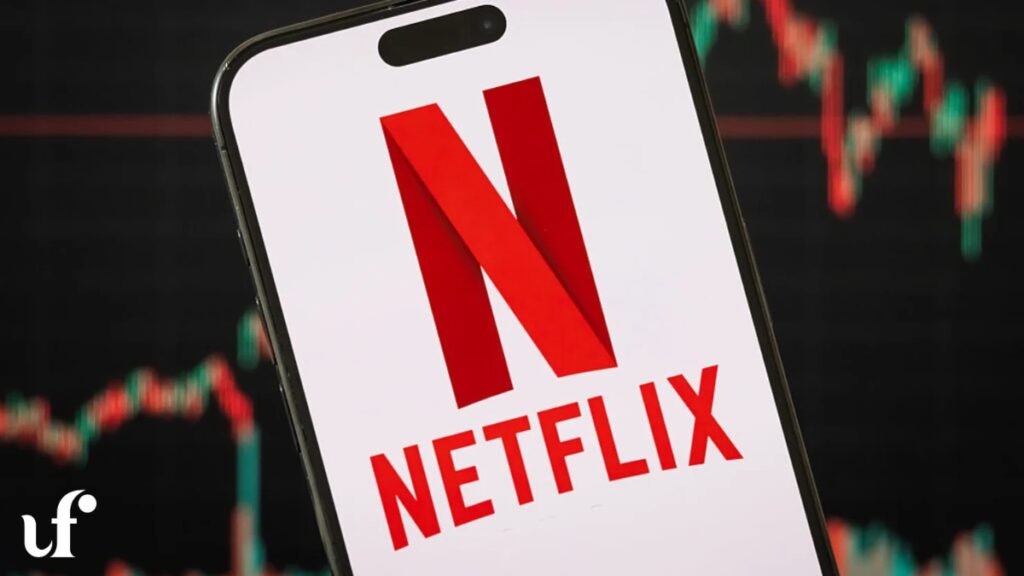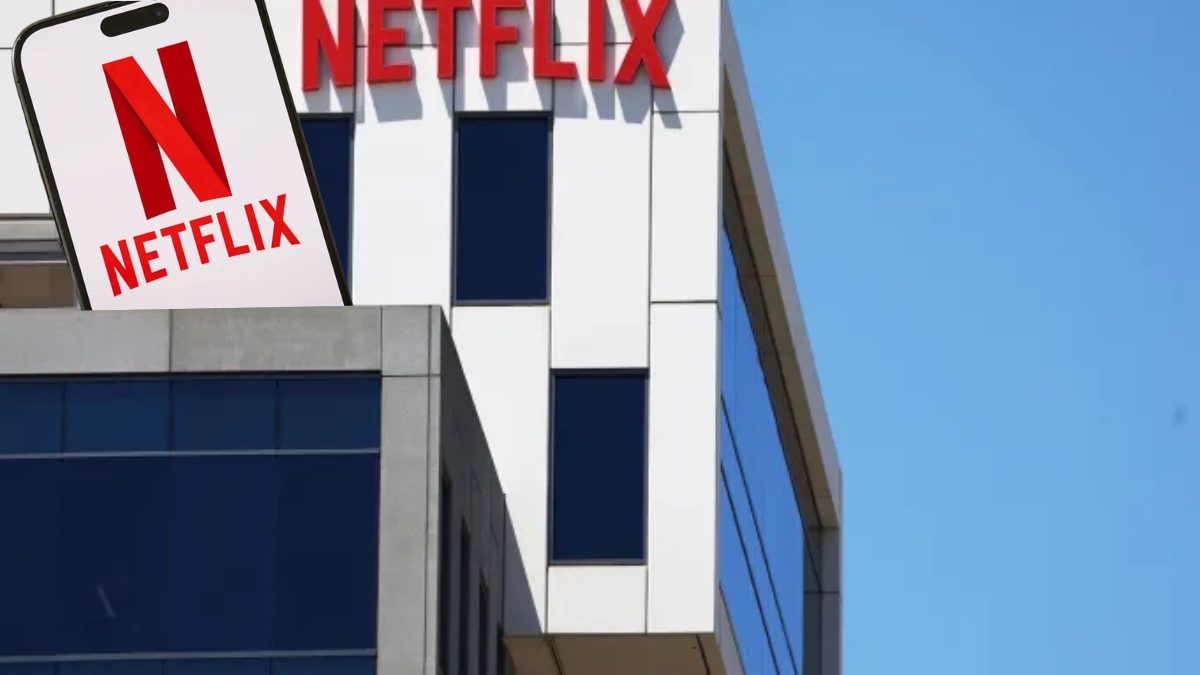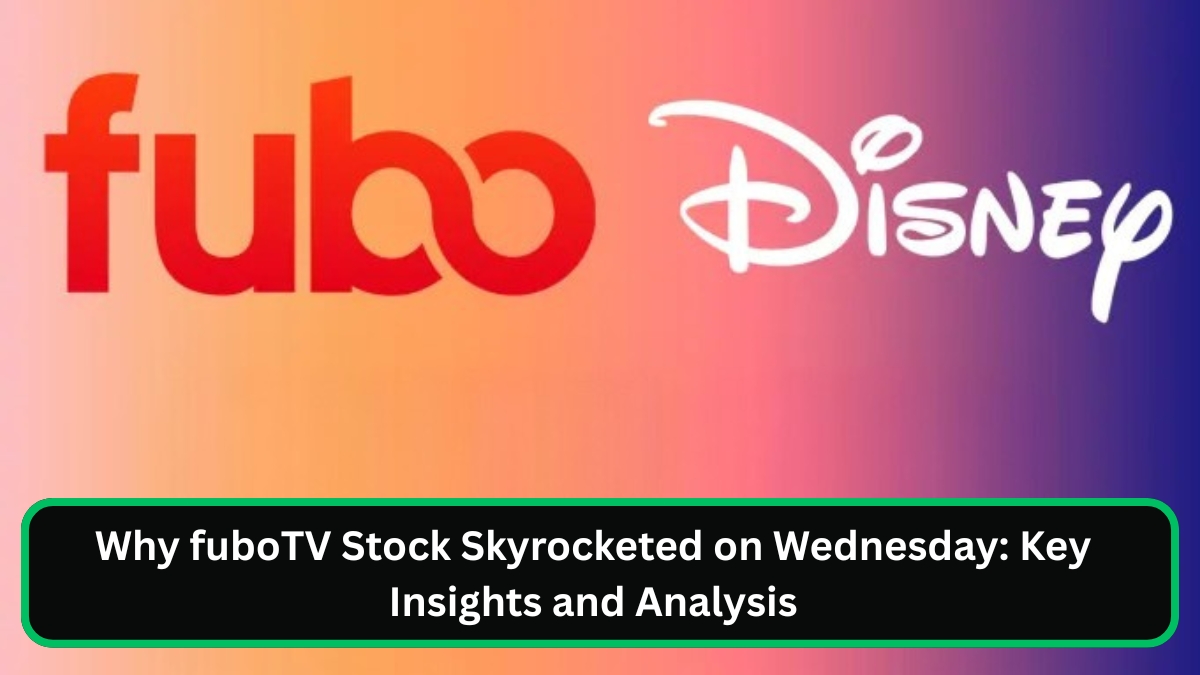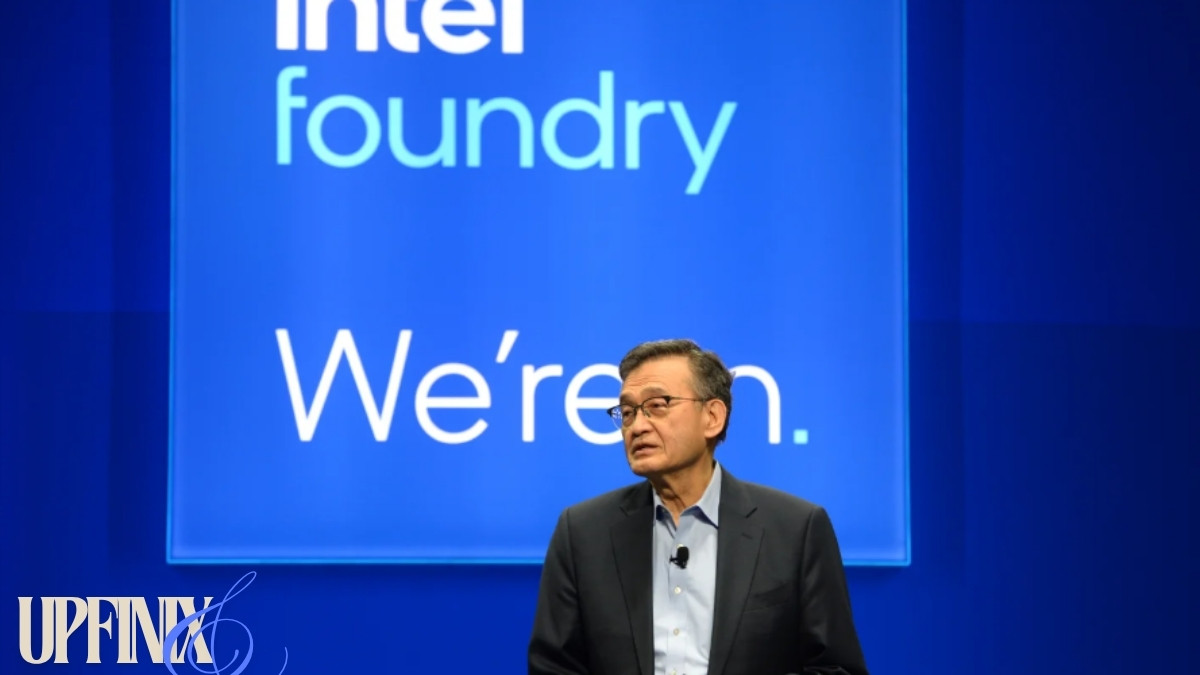After a stellar performance that saw Netflix stock (NASDAQ: NFLX) surge approximately 50% in the first half of 2025, vastly outperforming the S&P 500, investors find themselves at a critical juncture.1 The streaming pioneer has successfully navigated a period of intense skepticism, emerging with a fortified business model and a stock price trading near all-time highs.1 This impressive run, however, presents a central dilemma for both current and prospective shareholders.
The core question that this report seeks to answer is whether Netflix’s current, premium valuation is a fair reflection of its future growth prospects or a sign that its ambitious goals are already priced in, leaving little room for further upside. Is Netflix stock a compelling buy, a prudent hold, or a strategic sell at these elevated levels?.1
This report provides a comprehensive, data-driven deep dive to address that question. It will dissect the company’s mid-2025 financial health, unpack its multi-pronged growth strategy, weigh the significant risks and competitive pressures, and synthesize Wall Street’s consensus to provide a 360-degree view. For the discerning investor looking beyond the headlines, this analysis offers a definitive investment guide to understanding the forces shaping the future of NFLX.
Table of Contents
A Mid-2025 Financial Snapshot: Deconstructing the NFLX Ticker
As of mid-July 2025, Netflix stands as a titan of the media and technology landscape. The company’s stock trades in the range of $1,250 to $1,260 per share, not far from its 52-week high of $1,341.15 and significantly above its 52-week low of $587.04.3 This valuation has propelled its market capitalization to over $530 billion, cementing its status as one of the world’s most valuable companies and a dominant force in the consumer discretionary sector.5
The Valuation Conundrum
The most significant point of contention for investors is Netflix’s sky-high valuation. The stock’s Price-to-Earnings (P/E) ratio hovers around a lofty 59, a figure that is not only steep in absolute terms but also represents a substantial premium compared to its peers.8 For context, the average P/E for the broader communication services sector is approximately 19.5, and key competitors like The Walt Disney Co. trade at a P/E multiple closer to 21.10 This premium has led some analysts, such as those at Morningstar, to label the stock as significantly overvalued, estimating it trades at a 67% premium to their fair value calculation of $750 per share.10
This rich valuation has created a narrative that Netflix stock is “priced for perfection”.13 This means the market’s current price already assumes that the company will flawlessly execute on its ambitious growth strategy for years to come. It leaves very little margin for error; any slight miss on quarterly earnings, a downward revision in guidance, or a perceived slowdown in its growth engines could trigger a significant sell-off as investors recalibrate their expectations.11
| Company | Ticker | Market Cap (Mid-2025) | Price/Earnings (P/E) Ratio | Price/Sales (P/S) Ratio |
| Netflix, Inc. | NFLX | ~$532B 5 | ~59.0 8 | ~13.6 8 |
| The Walt Disney Co. | DIS | ~$215B 10 | ~20.9 10 | ~2.3 10 |
| Warner Bros. Discovery | WBD | ~$31B 10 | N/A (Not Profitable) 7 | ~0.8 (Implied) |
| Amazon.com, Inc. | AMZN | ~$2.37T 6 | ~80.0 (Company-wide) | ~4.0 (Company-wide) |
| Paramount Global | PARA | ~$8.7B 16 | ~6.5 (Implied) | ~0.3 (Implied) |
Data compiled from multiple sources as of July 2025. P/E and P/S ratios for competitors are approximate and may vary. Amazon’s metrics reflect the entire company, not just Prime Video.
The Narrative Shift from Growth to Profitability
Underpinning this valuation is a fundamental and successful pivot in Netflix’s corporate narrative. For over a decade, the single most important metric for Wall Street was subscriber growth. The stock would soar or plummet based on the net number of new members added each quarter. However, the subscriber loss crisis of 2022, which saw the company’s valuation collapse, was a watershed moment.17 It proved that in an increasingly saturated North American market, a business model predicated solely on adding new users was unsustainable.
Management’s response was decisive and transformative. They launched two powerful new strategic levers: a lower-priced, ad-supported subscription tier and a global crackdown on password sharing.17 These initiatives fundamentally changed the company’s growth algorithm. Netflix could now generate substantial new revenue from two previously untapped sources: price-sensitive consumers who were unwilling to pay for premium plans and the over 100 million households that were using the service for free.18
The success of these programs has allowed the company to shift its focus—and investors’ attention—away from raw subscriber counts and toward more durable financial metrics. In earnings calls and shareholder letters, management now consistently emphasizes revenue growth, operating margin expansion, and free cash flow (FCF) generation.21 The ultimate confirmation of this strategic evolution is the company’s decision to stop reporting quarterly subscriber numbers altogether starting in 2025.19 The investment thesis for
Netflix stock is no longer simply about “how many subscribers did they add?” but rather “how effectively are they monetizing their vast global audience?” With a full-year 2025 operating margin target of 29% and projected FCF of $8 billion, the company is signaling that the era of growth-at-all-costs is over, replaced by a focus on sustainable, profitable expansion.2
The Bull Case: Unpacking Netflix’s Pillars of Growth for 2025 and Beyond
Despite the high valuation, a powerful bull case for Netflix stock rests on four interconnected pillars of growth that suggest the company is just beginning to unlock its full monetization potential.
Pillar 1: The Advertising Revolution – A New Engine for Revenue
The most significant new growth driver is Netflix’s burgeoning advertising business. The ad-supported subscription tier has been a resounding success, now accounting for nearly half of all new signups in available markets and attracting over 94 million monthly active users globally by early 2025.15 This rapid adoption has emboldened management to forecast that advertising revenue will roughly double in 2025, building on strong growth in 2024.15
Strategically, the development of a proprietary ad-tech platform, the “Netflix Ads Suite,” is a crucial long-term advantage.26 By bringing its technology in-house, Netflix gains full control over ad formats, targeting capabilities, and performance measurement, allowing it to innovate faster and offer more value to advertisers than competitors who rely on third-party solutions.27 This ad tier serves a vital dual purpose: it provides an affordable entry point for new, price-sensitive subscribers, particularly in emerging international markets, and it acts as a “soft landing” for existing members who might otherwise cancel their service in response to price increases on the premium tiers, thus improving overall retention.
Pillar 2: Beyond the Binge – Monetizing Engagement
Netflix is strategically expanding beyond its core on-demand streaming business to create new, high-engagement revenue streams. The company is making a calculated push into live events, securing high-profile rights for two NFL games on Christmas Day and a multi-year deal for WWE’s flagship show, Raw, starting in 2026.2 The strategy is not to replicate a 24/7 sports network like ESPN, but to acquire marquee events that create cultural “must-see TV” moments, driving both new subscriptions and lucrative advertising opportunities.14 The 65 million peak viewers for a boxing event demonstrated the untapped potential in this area.25
Simultaneously, the company’s foray into gaming is designed to deepen user engagement and reduce churn. With popular mobile titles like Stranger Things racking up over 210 million downloads, Netflix is integrating gaming as a value-add within its existing subscription, making the service stickier for members.25 Looking further ahead, the launch of “Netflix House”—large-scale experiential entertainment venues set to open in Dallas and Philadelphia—signals a long-term ambition to extend its powerful intellectual property into the physical world, creating new, high-margin revenue streams akin to Disney’s theme parks and retail operations.10
Read More: – AWS Layoffs: What You Need to Know in 2025
Pillar 3: Global Dominance and Pricing Power
Netflix’s unmatched global scale, with over 300 million paid households in more than 190 countries, provides a formidable competitive advantage.31 The Europe, Middle East, and Africa (EMEA) region has become its largest and most profitable market, serving as a successful blueprint for continued expansion in the high-growth regions of Asia-Pacific and Latin America.25
This scale, combined with a deep and locally relevant content library, has given Netflix significant pricing power. Despite periodic price increases, including hikes in 2025, customer retention has remained remarkably strong.32 A survey by TD Cowen found that 54% of subscribers would be comfortable with further price increases of $1 or more per month, up from 49% a year prior.14 This indicates that consumers perceive a strong value in the service, giving management the flexibility to continue adjusting prices upward over time to fund further investment in content and technology.
Pillar 4: The Ambitious Road to $1 Trillion
Fueling investor enthusiasm is the company’s ambitious long-term vision. According to reports from The Wall Street Journal, Netflix has set internal goals to nearly double its revenue to approximately $78 billion and triple its operating income to $30 billion by the year 2030.1 These targets also include growing its global audience to 410 million subscribers and quadrupling ad sales to $9 billion.1
While some analysts rightly view these as “stretch goals” rather than firm guidance, they provide a clear roadmap of management’s confidence and ambition.12 This long-term framework helps bullish investors justify the stock’s current high valuation, as it frames the investment not on next quarter’s results, but on the potential for the company to join the elite club of trillion-dollar corporations within the decade.
This entire growth strategy is powered by a self-reinforcing “virtuous cycle” that has become the core of Netflix’s economic moat.26 The cycle begins with growing revenue from subscriptions and ads, which funds a massive content budget of around $18 billion for 2025.33 This enormous investment produces a vast and diverse library of global hits, which in turn attracts and retains a massive audience. High engagement from this audience provides rich data for the recommendation algorithm and creates a valuable platform for advertisers. The perceived value of this ever-expanding content universe then grants Netflix the pricing power to increase subscription fees, which feeds back into the revenue pool, restarting the cycle with even more capital. This flywheel effect is something that competitors, many of whom are still struggling to achieve consistent profitability, find incredibly difficult to replicate at scale.15
The Bear Case: Acknowledging the Risks and Headwinds
While the bull case is compelling, a prudent analysis of Netflix stock must thoroughly examine the significant risks and headwinds that could derail its growth trajectory. The arguments against investing at current levels are substantial and center on valuation, competition, and execution.
Risk 1: The Valuation Dilemma
The primary risk, and the one that informs all others, is the stock’s rich valuation. As previously discussed, with a P/E ratio approaching 60 and a Price-to-Sales ratio of nearly 14, the market has priced in years of near-flawless execution.1 This premium valuation creates a precarious situation where even minor disappointments can lead to major stock price declines. If revenue growth slows, if margin expansion stalls, or if new initiatives fail to meet lofty expectations, the market’s reaction could be severe as the valuation multiple contracts to align with a less optimistic reality.11
Risk 2: The Unceasing Streaming Wars
Netflix operates in a fiercely competitive environment. While it is the market leader in premium subscription video-on-demand (SVOD), it is not a monopoly. Several well-funded and strategically savvy competitors are vying for consumer attention and dollars.
- YouTube: Owned by Alphabet, YouTube is the undisputed leader in overall streaming minutes, particularly among younger demographics. It represents a massive and free alternative for video content.35
- Amazon Prime Video: With a huge library and the advantage of being bundled with the popular Amazon Prime membership, Prime Video has a massive built-in user base. While its primary function may be customer retention for Amazon’s e-commerce empire, its scale cannot be ignored.37
- Disney+: Leveraging a powerful portfolio of globally recognized intellectual property (IP) from Marvel, Star Wars, and Pixar, Disney+ has proven its model. It has successfully launched its own ad-supported tier and has recently achieved profitability in its streaming division, demonstrating it can compete effectively and sustainably.25
This intense competition puts a natural ceiling on how high Netflix can raise its prices without losing subscribers to more affordable alternatives. It also necessitates a continuous and massive investment in new and exclusive content simply to maintain its leadership position.
| Service | Cheapest Ad-Supported Price (US) | Premium Ad-Free Price (US) | Key Content Strengths | US Market Share (2025) |
| Netflix | $7.99/month 39 | $24.99/month 39 | Global Originals, Diverse Library, Live Events | 21% 37 |
| Disney+ / Hulu Bundle | $10.99/month (with ads) 40 | $19.99/month (no ads) 40 | Family Content, Major IP (Marvel, Star Wars), Network TV (FX, ABC) | ~23% (Combined) 37 |
| Amazon Prime Video | $8.99/month (standalone) 40 | $14.99/month (with Prime) + $3 for no ads 40 | Bundled Perks, Large Movie Library, Global Content | 22% 37 |
| Max (HBO) | $9.99/month 39 | $20.99/month (Ultimate) 39 | Premium HBO Originals, Warner Bros. Films, DC Content | 13% 37 |
Pricing and market share data compiled from multiple sources as of mid-2025.
Risk 3: The High Cost of Content and Execution
Netflix’s content budget is both a key strength and a significant risk. The company’s planned spend of nearly $18 billion in 2025 is essential to drive engagement, but it represents a massive fixed cost.33 As the company expands further into the world of live sports, it will face even greater cost pressures, as sports rights are notoriously expensive and competitive.23 Any misstep in content strategy—producing a string of expensive flops or overpaying for sports rights that don’t deliver the expected viewership—could significantly impact profitability and call the entire investment thesis into question.23
Furthermore, there is considerable execution risk associated with its new ventures. Live streaming can be technically challenging, as evidenced by some initial hiccups in early events.25 The gaming and experiential entertainment initiatives are promising but remain largely unproven at scale. If these new ventures fail to generate the anticipated return on investment, it would remove key pillars from the long-term growth story that currently supports the stock’s high valuation.
Risk 4: Market Saturation and Growth Deceleration
While international growth remains robust, the domestic U.S. and Canada (UCAN) market is showing clear signs of maturity. Netflix’s market share in this region is no longer growing, indicating it has reached a saturation point.26 This places immense pressure on the company’s other growth levers—international expansion, advertising, and price increases—to carry the load. Any slowdown in these areas would be particularly damaging, as the company can no longer rely on easy subscriber additions in its most lucrative market to mask weakness elsewhere. The law of large numbers dictates that maintaining high percentage growth becomes more difficult as the revenue base expands, a challenge Netflix will increasingly face in the years ahead.

Historical Context: Pivotal Moments That Forged the Modern Netflix
To fully understand the investment case for Netflix stock today, it is essential to examine two pivotal moments from its past. These events, one a near-catastrophic failure and the other a resounding success, reveal a great deal about the company’s culture, management, and strategic DNA.
Case Study 1: The 2011 “Qwikster” Fiasco – A Lesson in Humility
In 2011, Netflix was riding high, with its stock hitting all-time records above $300 per share.42 Confident in its market position, the company made a series of stunning miscalculations. First, it announced a new pricing structure that unbundled its DVD-by-mail and streaming services, resulting in an effective 60% price hike for customers who wanted both.43 The customer backlash was swift and fierce.
Compounding the error, CEO Reed Hastings then announced a plan to split the company in two, rebranding the legacy DVD business as a separate entity named “Qwikster”.44 The new service would have a separate website and billing system, creating a logistical nightmare for customers. The market reaction was brutal. In the months following the announcements, Netflix lost millions of subscribers, and its stock price plummeted by more than 75%.44 The Qwikster plan was so poorly received that it was abandoned just a few weeks after being announced.42
This historical blunder is crucial for today’s investor because it demonstrates two things. First, Netflix is not infallible and is capable of making profound strategic errors that alienate its customer base and destroy shareholder value. Second, and more importantly, it shows that management is capable of recognizing a mistake, listening to customer feedback, and reversing course quickly to salvage the business. The Qwikster debacle was a painful but valuable lesson in humility that has likely informed the company’s strategic decisions ever since.
Case Study 2: The 2023 Password-Sharing Crackdown – A Bold and Successful Pivot
The second pivotal moment is the mirror image of the first. By 2022, after years of turning a blind eye, Netflix faced a new crisis: slowing growth and the realization that over 100 million households were using the service for free through password sharing.17 Instead of a clumsy, poorly communicated change, Netflix executed a carefully planned and phased global crackdown on password sharing, which began in earnest in 2023.19
The company offered “borrower” households a clear choice: get your own account or be added as an “extra member” to an existing account for an additional fee. The results were a resounding success. Immediately following the U.S. rollout, Netflix recorded its four largest single days of user acquisition in over four years.20 The initiative successfully converted a major revenue headwind into a primary growth driver, contributing significantly to the company’s renewed financial strength.
This event showcases a management team that learned directly from the Qwikster fiasco. The rollout was methodical and the value proposition was clear. It proved the underlying strength and resilience of the Netflix brand and the high perceived value of its service. The stock, which had cratered in 2022, began a historic rebound, climbing over 200% from its lows as Wall Street recognized that the company had successfully unlocked a massive new revenue stream.17 This strategic victory is the foundation upon which the company’s current financial strength and optimistic 2025 outlook are built.
Check Video: https://finance.yahoo.com/video/netflix-earnings-deck-wall-street-154539047.html
Wall Street’s Verdict: 2025 Analyst Ratings and Forecasts for NFLX
Wall Street’s sentiment toward Netflix stock in mid-2025 is broadly positive, though tempered by concerns over its high valuation. The consensus rating among the 45 to 50 analysts covering the stock is a “Moderate Buy” or “Outperform”.31 A significant majority, typically around 30 analysts, rate the stock a “Strong Buy” or “Buy,” while a smaller contingent of about 13 analysts maintain a “Hold” rating, with very few recommending to sell.23
Price Targets and Earnings Forecasts
Analyst price targets reflect this cautiously optimistic consensus. The average one-year price target sits in a range of approximately $1,255 to $1,330.27 This suggests that most analysts see only modest single-digit to low-double-digit upside from the stock’s current trading levels, reinforcing the idea that much of the good news is already priced in.
The range of targets, however, reveals the bull-bear debate playing out on the Street:
- Bullish analysts from firms like Bank of America, Wedbush, and Pivotal Research have set price targets as high as $1,490 to $1,600, citing the company’s unmatched scale, advertising potential, and long-term growth runway.23
- Bearish or neutral analysts and valuation experts point to low-end targets around $726 to $800, highlighting the significant downside risk if the company’s growth falters or if its valuation multiple contracts.23
Expectations for the company’s financial performance are exceptionally high. For the second quarter of 2025, Wall Street anticipates revenue of approximately $11.04 billion, representing a 15% year-over-year increase, and earnings per share (EPS) of around $7.06, a staggering 44% jump from the prior year.48 For the full fiscal year 2025, the company has guided for revenue in the range of $43.5 billion to $44.5 billion and a robust operating margin of 29%.22 The stock’s performance for the remainder of the year will depend heavily on its ability to meet and, ideally, exceed these lofty forecasts.
| Firm | Rating (as of mid-2025) | Price Target | Key Rationale |
| Bank of America | Buy 27 | $1,490 27 | “Unmatched scale in streaming,” growth from live content and advertising. 14 |
| Wedbush | Outperform 27 | $1,400 27 | Price increases driving 2025 revenue; ad tier will drive 2026 growth. 27 |
| Pivotal Research | Buy 51 | $535 (pre-split equivalent) | Strong FCF, monetization of password sharers, unique tech growth story. 20 |
| Citi | Neutral 27 | $1,250 27 | Watching for updates on the proprietary ad-tech platform; valuation appears full. 27 |
| Seaport Research | Neutral (Downgrade) 13 | N/A | Growth upside is likely years away and already factored into the rich valuation. 34 |
| Morningstar | ★ (Significantly Overvalued) 12 | $750 12 | Stock is pricing in “stretch goals” that are unlikely to be achieved. 12 |
| JP Morgan | Neutral (Downgrade) 28 | N/A | Downgraded in May 2025 due to valuation concerns after the stock’s run-up. 28 |
This table synthesizes analyst ratings and price targets from multiple sources. Ratings and targets are subject to change. The Pivotal Research target is presented as a pre-split equivalent for historical context.
Conclusion: The Final Verdict on Netflix Stock
Netflix has engineered a remarkable business turnaround, evolving from a company facing a subscriber crisis into a profitable, cash-generating powerhouse with multiple avenues for future growth. The bull case is clear and compelling: the advertising tier is a powerful new revenue engine, the strategic expansion into live events and gaming deepens engagement, and unmatched global scale provides significant pricing power. The company’s focus has decisively shifted to durable financial metrics like operating margin and free cash flow, signaling a new era of maturity and profitability.
However, this success has come at a price—a stock valuation that is, by almost any measure, extraordinarily high. The bear case is equally clear: Netflix stock is priced for years of flawless execution, leaving it vulnerable to any misstep. Intense competition from deep-pocketed rivals like Amazon, Disney, and Google’s YouTube puts a constant pressure on content spending and limits long-term pricing power. Furthermore, the risks associated with rising content costs and execution in new, unproven ventures cannot be dismissed.
Ultimately, the decision to invest in Netflix in 2025 hinges on an investor’s time horizon and risk tolerance.
For long-term investors with a time horizon of five years or more, Netflix remains a compelling, albeit high-risk, holding. The company has established a powerful competitive moat through its virtuous cycle of content investment and audience engagement, and it is still in the early innings of monetizing its platform through advertising and other initiatives. These investors are buying into management’s ambitious vision to reach a $1 trillion market capitalization by 2030 and must be prepared to weather significant volatility along the way.
For short-term traders and risk-averse investors, the stock is a far less attractive proposition. The current valuation leaves very little margin for safety, and the risk-reward profile for a quick return is unfavorable. Any failure to meet Wall Street’s sky-high expectations could lead to a sharp and painful correction.
The key to the future of Netflix stock lies in a single question: Can management continue its streak of near-flawless execution and grow the company’s revenue and profits fast enough to justify its premium valuation? The evidence suggests they have the strategy and the tools to do so, but the path forward is narrow and fraught with challenges.
Exhaustive FAQ: Answering Your Top Questions About Netflix Stock
1. Is Netflix stock a good long-term investment in 2025?
Determining if Netflix stock is a good long-term investment in 2025 requires balancing its powerful growth narrative against its significant valuation risk. For an investor with a high tolerance for volatility and a time horizon of at least five years, the long-term thesis remains highly compelling. The foundation of this thesis is the company’s “virtuous cycle,” a self-reinforcing business model where growing revenue funds a massive content budget, which in turn attracts and retains a large global audience, enabling further monetization through advertising and price increases.26 This creates a formidable competitive moat that rivals struggle to replicate.
Furthermore, Netflix is still in the early stages of tapping into its total addressable market. Management has cited a potential $650 billion revenue opportunity across streaming, advertising, and other entertainment formats, which dwarfs its 2024 revenue of roughly $39 billion.15 The primary growth levers for the long term include:
• Advertising: With ad revenue expected to double in 2025 and a goal to reach $9 billion by 2030, this is a massive, high-margin opportunity that is just beginning to scale.1
• Global Expansion: While the North American market is mature, there is still significant room for growth in subscriber numbers and average revenue per user (ARPU) in regions like Asia-Pacific and Latin America.25
• New Verticals: The strategic moves into live events (NFL, WWE), gaming, and experiential entertainment (“Netflix House”) are long-term plays designed to diversify revenue streams and deepen brand loyalty.10
Investors are essentially buying into management’s ambitious 2030 vision of doubling revenue and tripling operating income.1 However, this potential comes with the caveat of extreme valuation. The stock is priced for success, meaning any stumbles in execution will be punished harshly. Therefore, while the long-term growth story is powerful, investors must be prepared for significant price swings and understand that the path to realizing these gains will likely be volatile
2. What are the biggest risks facing Netflix stock right now?
The risks facing Netflix stock in mid-2025 are substantial and should be carefully considered by any investor. They can be categorized into four main areas:
1. Valuation Risk: This is the most immediate and significant risk. With a Price-to-Earnings (P/E) ratio of approximately 59, the stock trades at a massive premium to the market and its peers.1 This valuation implies that Wall Street has already priced in several years of strong, uninterrupted growth. It creates a “priced for perfection” scenario where the company must consistently beat high expectations. Any sign of slowing growth, margin compression, or a failure to meet guidance could trigger a rapid and severe stock price correction as its valuation multiple contracts.11
2. Intense Competition: The “streaming wars” are far from over. Netflix faces formidable, well-funded competitors. YouTube dominates overall viewing time, especially with younger audiences.36 Amazon Prime Video leverages its massive Prime ecosystem to offer a vast content library as part of a broader value bundle.37 Disney+ has proven its ability to monetize its world-class intellectual property and has achieved profitability in its streaming segment.25 This relentless competition puts a cap on Netflix’s pricing power and forces it to maintain a massive content spend (nearly $18 billion in 2025) just to stay ahead, which perpetually pressures margins.23
3. Content Costs and Execution Risk: The cost of producing high-quality original content and licensing popular titles continues to rise. The expansion into live sports, with expensive rights for properties like the NFL and WWE, adds another layer of high-cost investment.41 There is always the risk of producing expensive flops that fail to attract viewers. Furthermore, new ventures like gaming and live events, while promising, carry significant execution risk. Technical glitches or a failure to generate the expected return on these investments could undermine key pillars of the future growth narrative.25
4. Market Saturation: The U.S. and Canada market, Netflix’s most profitable region, is now mature, with subscriber growth having plateaued.26 This shifts the burden of growth almost entirely to international markets and new revenue streams like advertising. This dependence on less predictable international markets and the nascent ad business increases the overall risk profile of the company’s growth targets.
3. How does Netflix’s valuation compare to its competitors like Disney and Amazon?
Netflix’s valuation is significantly higher than that of its direct media competitors, a premium the market assigns for specific reasons. A direct comparison reveals the stark differences in how these companies are valued.
As of mid-2025, Netflix stock trades at a P/E ratio of roughly 59.8 In contrast, The Walt Disney Co. (DIS) trades at a P/E of approximately 21, while other legacy media players like Paramount Global have even lower multiples.10 The market justifies this premium for several reasons. Netflix is a pure-play streaming leader with a fully global footprint and no legacy business baggage. Unlike Disney or Warner Bros. Discovery, it is not encumbered by declining linear television networks or the complexities of a theatrical film business. Its growth rates for revenue and earnings are projected to be substantially higher, and its operating margins are expanding rapidly, with a target of 29% for 2025.22 Investors are paying a premium for this focused, high-growth, and increasingly profitable business model.
The comparison with Amazon (AMZN) is more complex. While Amazon’s overall P/E ratio is also high, its valuation is primarily driven by its dominant, high-margin cloud computing division (AWS) and its massive e-commerce operation.6 Prime Video is not a primary profit center for Amazon; rather, it serves as a crucial component of the Prime membership bundle, a powerful tool for customer acquisition and retention for its retail business. It operates on a different economic model than Netflix, which must generate all its profit directly from its streaming service.
In essence, the market values Netflix as a high-growth technology company, similar to other members of the “Magnificent Seven,” while it values Disney and other media rivals as more traditional (and slower-growing) entertainment companies. This explains the valuation gap but also quantifies the risk: Netflix must continue to deliver tech-like growth to sustain its tech-like multiple.
4. What is the realistic forecast for Netflix stock for the rest of 2025 and into 2026?
The realistic forecast for Netflix stock for the remainder of 2025 is one of continued operational strength set against a backdrop of a demanding valuation. The company’s own guidance for the full year 2025 projects robust growth, with revenues targeted between $43.5 billion and $44.5 billion and a full-year operating margin of 29%.22 This implies continued double-digit revenue growth and significant margin expansion compared to 2024. Wall Street analysts are largely aligned with this outlook, expecting strong quarterly results to continue.
However, the stock’s price performance will depend on whether the company can exceed these already high expectations. The consensus analyst price target of around $1,330 suggests only modest upside from its mid-2025 price, indicating a belief that much of this strong performance is already reflected in the stock.27 Therefore, for the rest of 2025, the stock could trade within a range, grinding higher on positive news but susceptible to pullbacks on any perceived weakness.
Looking ahead to 2026, the growth narrative is expected to shift even more decisively toward the advertising business. Analysts at firms like Wedbush have stated that while price increases are the primary revenue driver in 2025, the ad-supported tier will become the main engine of growth in 2026.27 Key factors to watch will be the growth rate of ad-tier subscribers, the increase in advertising ARPU, and the successful international rollout of Netflix’s proprietary ad-tech platform. Continued expansion into live events and gaming will also be critical. A realistic forecast would see Netflix continue to grow its top and bottom lines at a healthy clip, but the stock’s performance will be a tug-of-war between this fundamental growth and its persistently high valuation multiple.
5. How can a beginner invest in Netflix (NFLX) stock?
For a beginner looking to invest in Netflix stock, the process is straightforward and accessible through modern online brokerage platforms. Following a disciplined, step-by-step approach is crucial.52
1. Do Your Research: The first and most important step is to understand the investment. Reading a comprehensive analysis like this report helps a beginner grasp the business model, growth drivers, risks, and valuation. It’s vital to understand what you are buying and why.
2. Open a Brokerage Account: You cannot buy stock directly from Netflix; you need a brokerage account.53 Many reputable online brokers offer low or no-commission trading and are designed for beginners.
3. Fund Your Account: Once the account is open, you will need to link a bank account and transfer funds to cover the cost of your investment.
4. Decide How Much to Invest: This is a critical risk management step. A core principle of investing is diversification. A beginner should avoid putting a large portion of their savings into a single stock like Netflix. It is wise to start with a small position that you are comfortable with. Many brokers now offer fractional shares, which allow you to invest a specific dollar amount (e.g., $100) rather than buying a full, expensive share. This is an excellent option for beginners.52
5. Place Your Order: Inside your brokerage platform, you will use the stock’s unique ticker symbol, NFLX, to find it.52 You will then need to place an order. The two most common types are:
• Market Order: This tells your broker to buy the stock immediately at the best available current price. The final price may be slightly different from what you see on your screen.52
• Limit Order: This allows you to set a specific maximum price you are willing to pay per share. The order will only execute if the stock price reaches your limit price or lower. This gives you more control over the purchase price.52
6. Submit and Monitor: After filling out the order details, you submit it. Once the trade is executed, you will own a piece of Netflix. It is important to monitor your investment periodically but to avoid making rash decisions based on short-term market fluctuations.
6. Does Netflix pay a dividend, and what is its policy on shareholder returns?
No, Netflix does not pay a dividend.10 The company has never paid a dividend throughout its history as a publicly traded company. This is a common practice for high-growth companies, particularly in the technology and media sectors. The rationale is that the company believes it can generate a better return for its shareholders by reinvesting all of its profits back into the business to fuel further growth. These reinvestments are directed toward its massive content budget, technological innovation (like its recommendation engine and ad platform), and expansion into new business lines like gaming and live events.
While it does not offer a dividend, Netflix has a robust policy for returning capital to its shareholders through an alternative method: share buybacks, also known as share repurchases.2 When the company uses its cash to buy its own stock from the open market, it reduces the total number of shares outstanding. This has the effect of increasing the ownership percentage of the remaining shareholders and can also be accretive to earnings per share (EPS).
Netflix has become increasingly aggressive with its share buyback program as its free cash flow has grown. The company spent $6.2 billion on repurchases in 2024, and its board recently authorized an additional $15 billion for future buybacks.2 This demonstrates a strong commitment to enhancing shareholder value, just through a different mechanism than a cash dividend. For investors, this means the return on their investment is expected to come from capital appreciation (the stock price going up) rather than from regular income payments.










